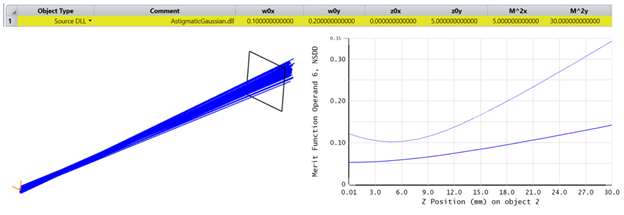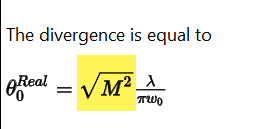
This Source DLL models an Astigmatic Gaussian Source. It is based on rays but the statistical distribution of rays gives a picture of a diffracting Gaussian beam. It is valid for small angles (paraxial approximation) and when propagating in free space. So clipping at apertures and aberrations will give incorrect results.
- w0x, w0y are the real beam waist radii (defined at the 1/e2 intensity point) in the XZ and YZ planes. They includes M^2.
- z0x, z0y are the positions of the beam waist in the XZ and YZ planes. z0<0: in propagation direction if the waist is located before source.
- M^2x, M^2y are the quality factors in the XZ and YZ planes.
For more information, see "Representation of a Gaussian beam by rays" by P. P. Crooker, W. B. Colson, and J. Blau - Physics Department, Naval Postgraduate School, Monterey, California 93943
Authors:
Steffen Erhard and
Click here to download | |||
|---|---|---|---|
| Date | Version | OpticStudio Version | Comment |
| 2020/05/06 | 1.0 | 21.1.2 | Creation |
| 2023/01/06 | 1.1 | 22.3 | Fix starting medium |







